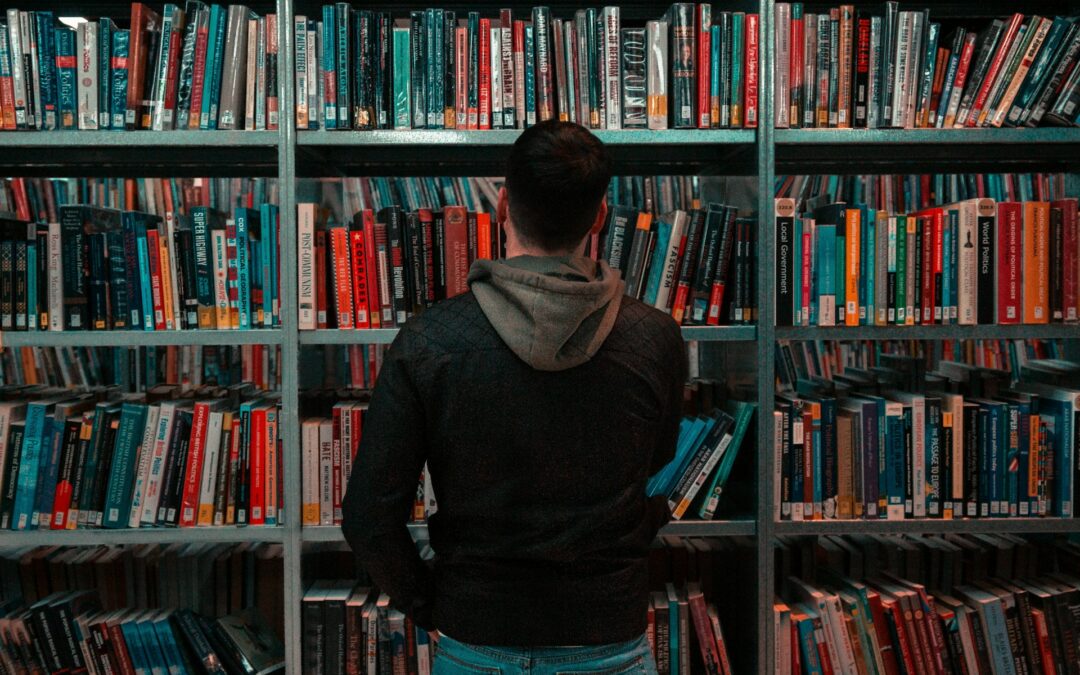In life, failure often carries a negative connotation, yet it’s an invaluable teacher, offering profound insights and opportunities for growth. In this article, we delve into 30 compelling examples of learning from failure across various fields and contexts. From business ventures to personal endeavors, these stories illustrate how setbacks can serve as catalysts for success.
Each example is a testament to resilience, innovation, and the power of perseverance. We’ll explore how individuals and organizations navigated adversity, turned setbacks into stepping stones, and emerged stronger and more resilient than before. Through these real-life accounts, we uncover actionable lessons and strategies that you can apply to your own journey toward success. Whether you’re an entrepreneur, student, or professional seeking inspiration, these stories offer invaluable wisdom to help you embrace failure as a crucial part of the learning process. Join us as we uncover the transformative power of failure and learn from the experiences of those who have turned stumbling blocks into stepping stones.
The Best Examples of Learning from Failure
What Does Learning from Failure Mean?
Learning from failure refers to the process of gaining insights, knowledge, and experience from unsuccessful attempts or setbacks. It involves analyzing the reasons behind the failure, identifying areas for improvement, and adjusting strategies to achieve better outcomes in the future. This approach fosters resilience, innovation, and personal growth, as individuals and organizations use failure as a stepping stone toward success. By embracing failure as a valuable learning opportunity, individuals can develop problem-solving skills, adaptability, and a growth mindset, ultimately enhancing their ability to overcome challenges and achieve their goals.
Learning from failure involves a continuous cycle of experimentation, reflection, and refinement. It encourages individuals to view failure not as a roadblock, but as a necessary part of the learning process. Through failure, individuals gain valuable insights into what works and what doesn’t, enabling them to make more informed decisions and take calculated risks in the future. Moreover, learning from failure fosters a culture of continuous improvement within organizations, where failures are seen as opportunities for innovation and growth rather than sources of blame or shame. This proactive approach to failure not only builds resilience but also fosters creativity and fosters a mindset conducive to success in an ever-changing world.
Importance of Learning from Failure
In the journey of life, failure is often seen as a stumbling block, a setback to be avoided at all costs. However, what if failure were reframed not as an obstacle, but as an essential stepping stone to success? This paradigm shift lies at the heart of understanding the importance of learning from failure.
Throughout history, countless individuals and organizations have faced adversity, encountered setbacks, and experienced outright failure. Yet, it is often those very moments of defeat that catalyze profound growth, innovation, and progress.
Consider the story of Thomas Edison, whose relentless pursuit of the electric light bulb involved thousands of failed attempts. With each experiment gone awry, Edison famously remarked, “I have not failed. I’ve just found 10,000 ways that won’t work.” His resilience in the face of failure ultimately led to one of the most transformative inventions of the modern era.
Similarly, companies like Apple and Google have leveraged setbacks as opportunities for learning and refinement. Apple’s early struggles with the Apple III and Google’s missteps with products like Google Wave serve as poignant reminders that failure is not a dead end, but rather a detour on the path to success. These companies did not shy away from failure; instead, they embraced it, dissected it, and used it as a springboard for improvement.
The importance of learning from failure extends beyond individual achievements to broader societal progress. In the realm of scientific discovery, failure is an inherent part of the iterative process. Each unsuccessful experiment offers invaluable insights that pave the way for future breakthroughs. As renowned physicist Marie Curie once said, “I was taught that the way of progress was neither swift nor easy.” Indeed, progress often requires stumbling through the darkness of failure before emerging into the light of success.
Moreover, the ability to learn from failure fosters resilience, adaptability, and humility—qualities that are indispensable in an ever-changing world. In today’s fast-paced society, where uncertainty and volatility are the new constants, those who can embrace failure as a teacher hold a distinct advantage.
Yet, the journey from failure to success is not without its challenges. It requires courage to confront one’s shortcomings, humility to acknowledge mistakes, and perseverance to press onward in the face of adversity. However, the rewards of such resilience are immeasurable.
In conclusion, the importance of learning from failure cannot be overstated. It is through our setbacks and struggles that we uncover hidden truths, unlock new possibilities, and ultimately realize our fullest potential. As we navigate the complexities of life, let us remember that failure is not the end of the road but rather a stepping stone on the path to greatness.
How Failure Can Be a Stepping Stone to Success?
Failure is often viewed as the antithesis of success, a setback to be avoided at all costs. However, contrary to popular belief, failure can serve as a crucial stepping stone on the path to success. Rather than being a dead-end, failure offers invaluable lessons, opportunities for growth, and a chance to refine strategies.
One of the most fundamental aspects of failure is its role in fostering resilience. When faced with setbacks, individuals are forced to confront their limitations, adapt their approaches, and persevere in the face of adversity. This resilience is not only essential for navigating challenges but also for building the mental fortitude necessary to withstand future obstacles.
Moreover, failure provides invaluable feedback that can inform future decisions and actions. By analyzing what went wrong and identifying areas for improvement, individuals can refine their strategies and increase their chances of success in subsequent attempts. In this way, failure serves as a powerful learning tool, offering insights that would be difficult to gain through success alone.
Furthermore, failure fosters innovation and creativity. When traditional approaches prove unsuccessful, individuals are often forced to think outside the box, explore new avenues, and experiment with unconventional ideas. Some of the greatest breakthroughs in history have emerged from the ashes of failure, as innovators refuse to be deterred by initial setbacks and instead use them as catalysts for innovation.
Importantly, failure also cultivates humility and empathy. Experiencing failure firsthand can offer a newfound appreciation for the challenges faced by others, fostering empathy and understanding. Moreover, it can humble individuals, reminding them of their fallibility and encouraging them to approach future endeavors with a sense of humility and openness to feedback.
Ultimately, failure is not a reflection of one’s worth or potential but rather a natural and inevitable part of the journey toward success. By reframing failure as an opportunity for growth, learning, and resilience, individuals can harness its transformative power and use it as a stepping stone on the path to achieving their goals. As Thomas Edison famously said, “I have not failed. I’ve just found 10,000 ways that won’t work.” In this spirit, failure should be embraced as a necessary and invaluable companion on the road to success.
Read also: 20 Best Equilibrium Examples & Definition
The Most Popular on BitGlint

30 Nature Worship Examples & Meaning
Nature has always mattered to people. Long before modern religions, people looked to the sky, the land, and the...

Top 30 Synergy Examples in Different Fields & Definition
Synergy represents one of the most powerful concepts across numerous fields - from business and science to...

30 Doubt Examples & Meaning
Everyone experiences doubt. It can show up in small everyday choices or big life decisions. Sometimes it’s a quiet...

40 Emotional Value Examples & Meaning
Why do some messages stick — while others are forgotten? Why do people choose one brand over another, even when the...

100 Temporary Things Examples & Meaning
What does it mean when something is temporary? We use the word often, but many people don’t stop to think about it. In...

100 Things That Are Short
Not everything in life is big or long-lasting. Some things are small. Some things pass quickly. People notice short...

100+ Things That Are Cold
Cold is something most people understand the moment they feel it. You step outside on a freezing morning. You grab a...
Get Inspired with BitGlint
The Latest
30 Examples of Gathering & What It Means
The word gathering shows up in everyday life more than we think. People gather at dinner tables, sports games, places of worship, and even in traffic. We gather items, thoughts, ideas, and people. It’s a word that covers both the ordinary and the meaningful. But what...

100 Non-Digital Things List
In everyday life, there are still hundreds of objects, tools, and materials that exist completely outside the digital world. These things don’t rely on apps, batteries, software, or code. They work the way they always have — by touch, by movement, by presence. Some...
100+ Legends Examples, Types, and Meanings
Legends have fascinated people for centuries. These traditional stories mix real history with imagination. From ancient warriors and lost cities to mysterious creatures, legends are found in every culture around the world. This article will take you through over 100...
100 Winged Things List
Wings have captured human imagination for centuries. From tiny insects to powerful birds, from mythical beasts to modern machines, wings allow movement, lift, and freedom. This list of 100 winged things covers the most fascinating examples found in nature, history,...

